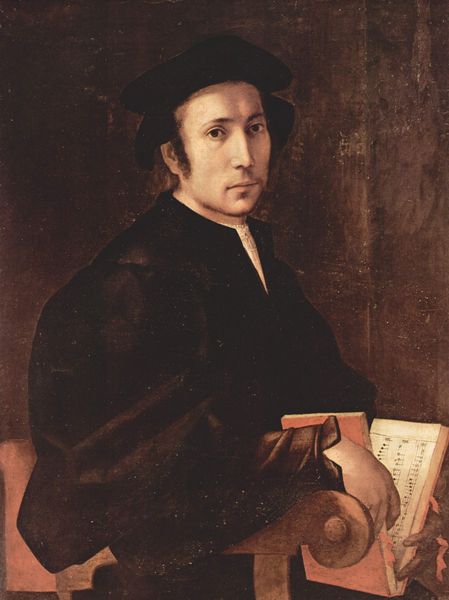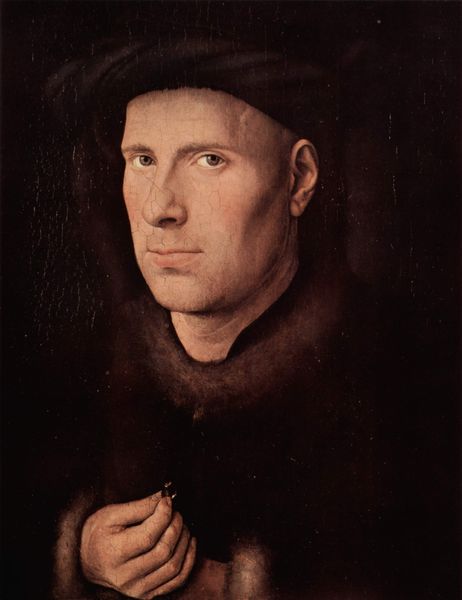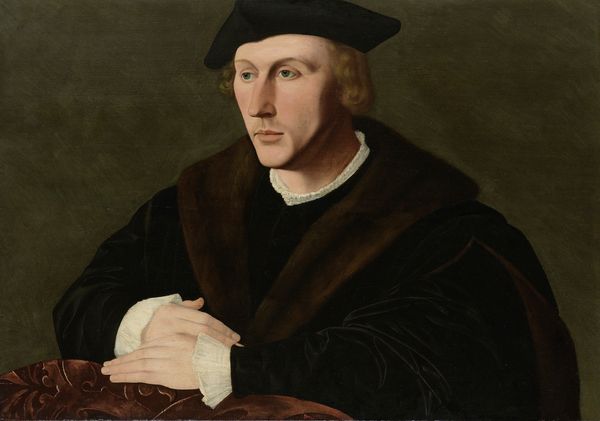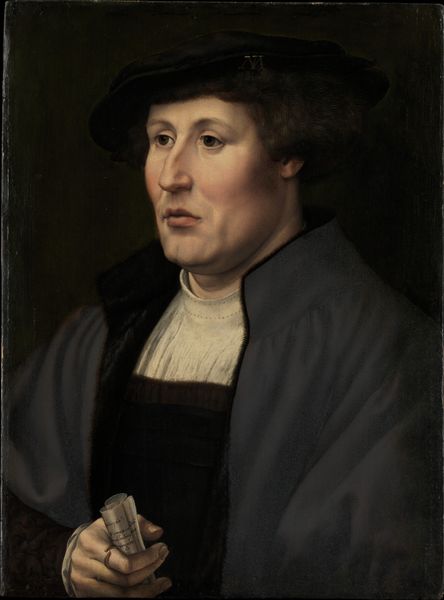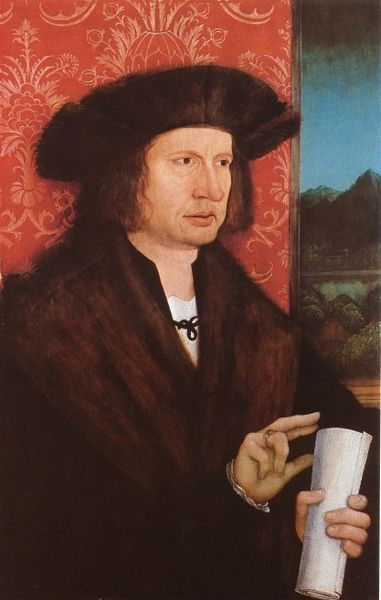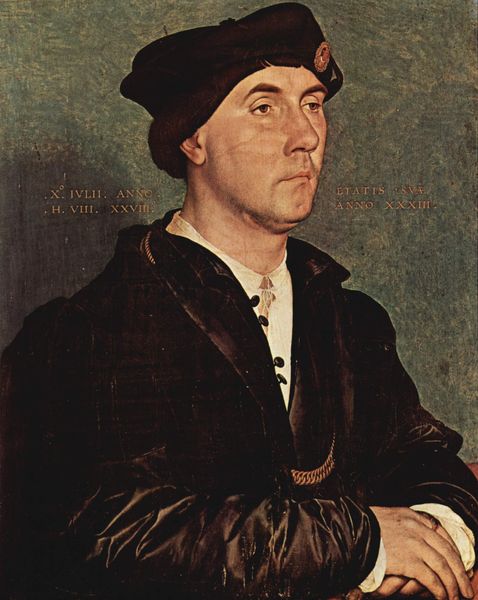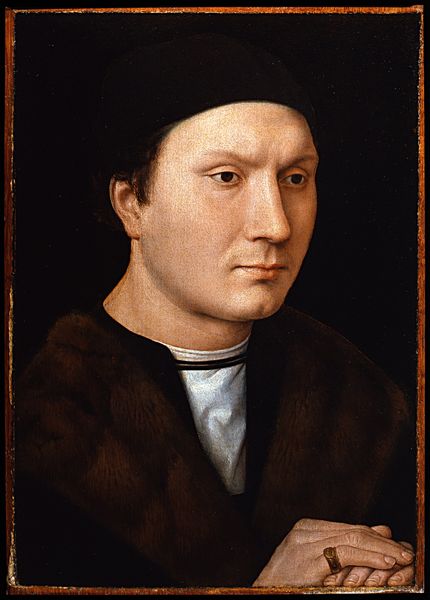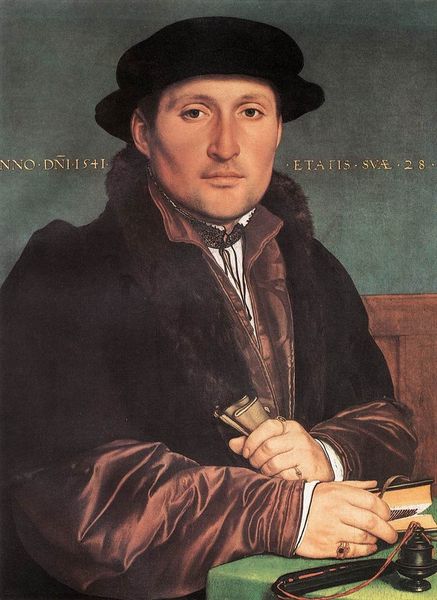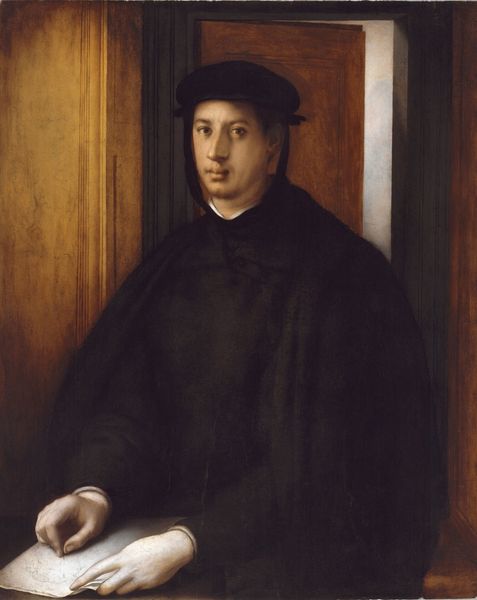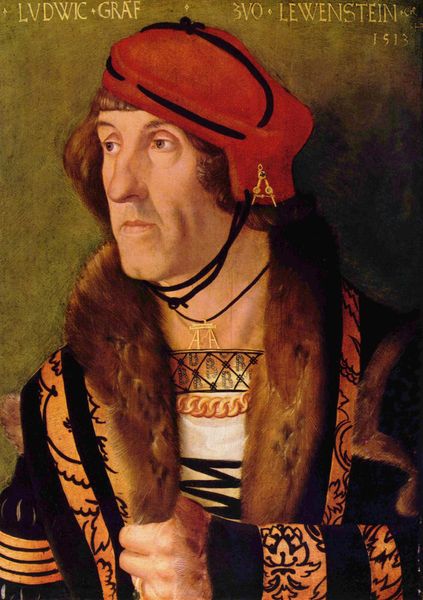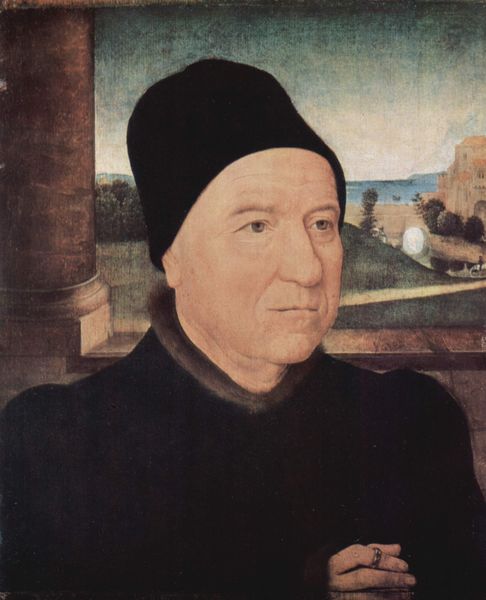
painting, oil-paint
#
portrait
#
painting
#
oil-paint
#
figuration
#
11_renaissance
#
history-painting
#
northern-renaissance
Dimensions: 42 x 53 cm
Copyright: Public domain
Here we see Hans Holbein the Younger's portrait of Henry Howard, Earl of Surrey. Although undated, it’s likely this work was completed sometime before Holbein’s death in 1543. Consider Holbein’s position as a Northern Renaissance artist working for wealthy patrons. This portrait encapsulates the intricacies of identity and status during the Tudor era. Henry Howard was a nobleman and a poet; his attire signifies affluence and power, yet Holbein also captures a certain vulnerability in his gaze. The portrait transcends a mere depiction of wealth; it encourages us to ponder the narratives we construct around historical figures and the ways in which artists like Holbein both perpetuate and subvert those narratives. What do we make of Henry's gaze? What might he be thinking? And what does his portrait tell us about the complex intersection of power, identity, and representation in the 16th century?
Comments
No comments
Be the first to comment and join the conversation on the ultimate creative platform.
